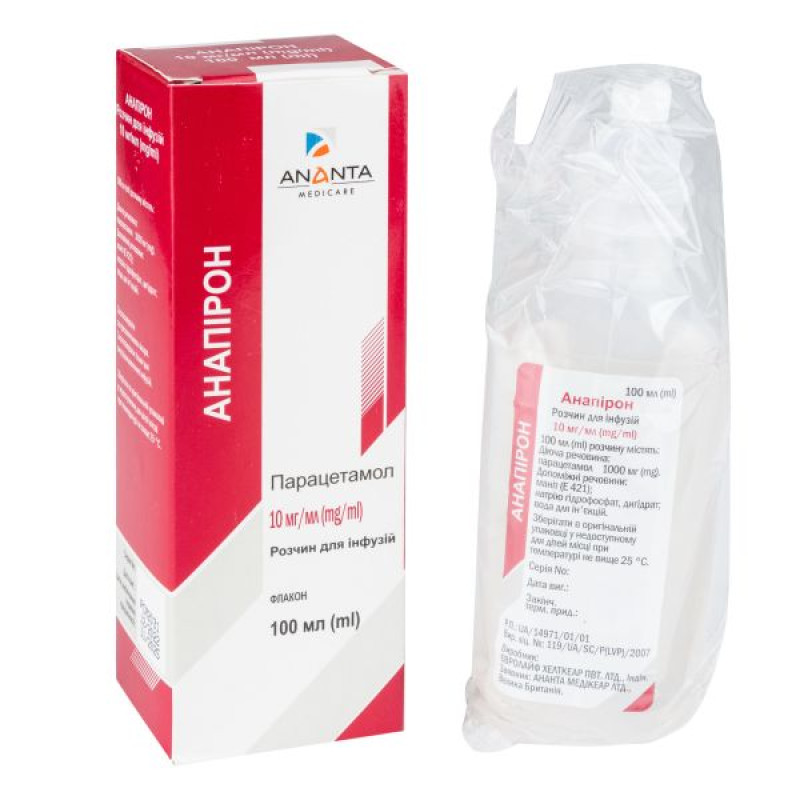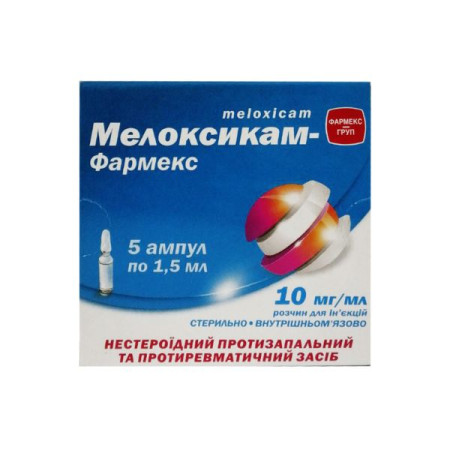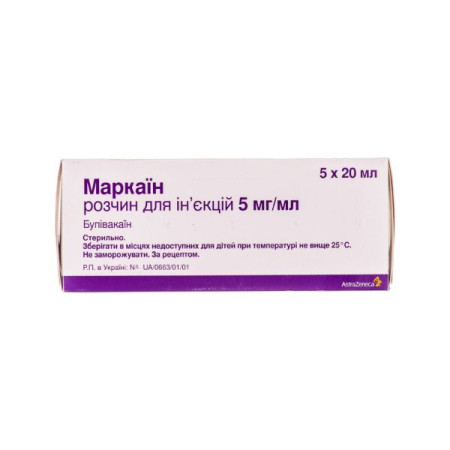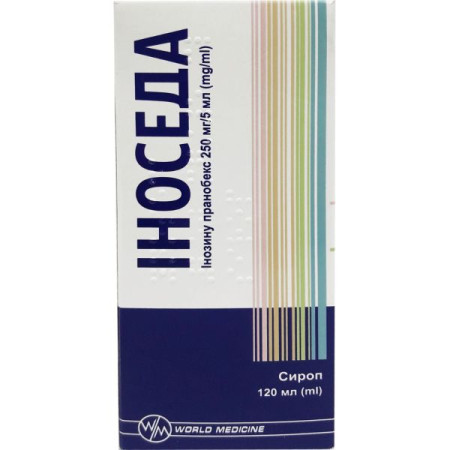Anapiron solution for infusions 10 mg/ml container 100 ml No. 1
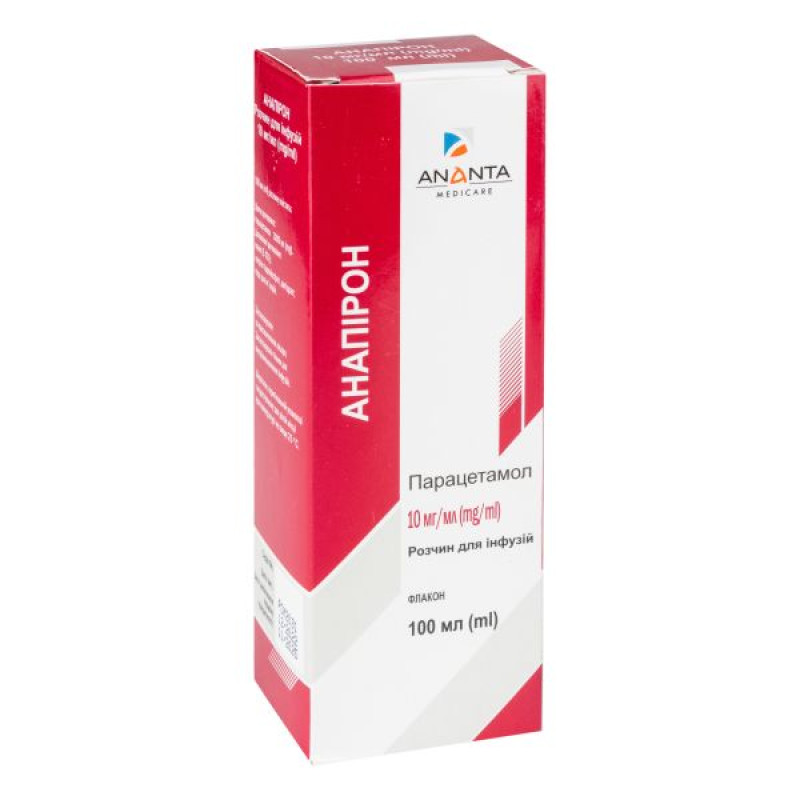
Instructions for use Anapiron solution for infusions 10 mg/ml container 100 ml No. 1
Composition
active ingredient: paracetamol;
100 ml of solution contains 1000 mg of paracetamol;
Excipients: mannitol (E 421); sodium hydrogen phosphate, dihydrate; water for injections.
Dosage form
Solution for infusion.
Main physicochemical properties: transparent, colorless to pale yellow solution.
Pharmacotherapeutic group
Analgesics and antipyretics. ATX code N02B E01.
Pharmacological properties
Pharmacodynamics.
Mechanism of action
The exact mechanism of paracetamol's analgesic and antipyretic properties has yet to be established, and may involve central and peripheral effects.
Pharmacodynamic effects
Anapiron provides the onset of analgesia 5-10 minutes after the start of administration. The peak analgesic effect is achieved after 1 hour, the duration of this effect is usually 4-6 hours.
Anapiron reduces fever within 30 minutes after the start of administration with a duration of antipyretic effect of at least 6 hours.
Pharmacokinetics.
Adults
Absorption
After a single administration of up to 2 g of the drug and after repeated administration within 24 hours, the pharmacokinetics of paracetamol are linear.
Bioavailability after intravenous infusion of 500 mg and 1 g of paracetamol is the same as after administration of 1 g and 2 g of propacetamol (containing 500 mg and 1 g of paracetamol, respectively). The maximum concentration (Cmax) in the blood plasma is reached at the end of a 15-minute infusion of 500 mg or 1 g of paracetamol and is 15 μg/ml or 30 μg/ml, respectively.
Distribution
The volume of distribution of paracetamol is approximately 1 l/kg. Paracetamol is poorly bound to plasma proteins. After administration of 1 g of paracetamol, significant concentrations (approximately 1.5 μg/ml) were established in the cerebrospinal fluid 20 minutes after infusion.
Metabolism
Paracetamol is extensively metabolized in the liver by two main pathways: glucuronic acid conjugation and sulfuric acid conjugation. The latter pathway is rapidly saturated at doses exceeding therapeutic levels. A small portion (less than 4%) is metabolized by cytochrome P450 to form an intermediate metabolite (N-acetylbenzoquinoneimine), which under normal conditions is rapidly neutralized by reduced glutathione and excreted in the urine after binding to cysteine and mercaptopuric acid. However, in massive poisoning, the amount of this toxic metabolite increases.
Breeding
Paracetamol metabolites are excreted mainly in the urine. 90% of the administered dose is excreted by the kidneys within 24 hours, mainly as glucuronide (60-80%) and sulfate (20-30%). Less than 5% is excreted unchanged. The half-life is 2.7 hours, and the total clearance is 18 l/hour.
Newborns, infants and children
The pharmacokinetics of paracetamol in children are almost the same as in adults, with the exception of a shorter plasma half-life (1.5-2 hours). In newborns, the half-life is longer than in infants - approximately 3.5 hours. In children under 10 years of age, compared with adults, conjugation with glucuronic acid is significantly reduced and with sulfates is increased.
Pharmacokinetic values according to age (standardized clearance,
*CLstd/Foral (lh-1 70 kg-1)
| Age | Body weight (kg) | CLstd/Foral (lh-1 70 kg-1) |
40 weeks from conception 3 months of postnatal age 6 months of postnatal age 1 year of postnatal age 2 years of postnatal age 5 years of postnatal age 8 years of postnatal age | 3.3 6 7.5 10 12 20 25 | 5.9 8.8 11.1 13.6 15.6 16.3 16.3 |
*CLstd – patient group assessment of CL (clearance).
Special patient groups
Patients with renal insufficiency
In severe renal insufficiency (creatinine clearance 10-30 ml/min), the elimination of paracetamol is somewhat delayed, with a half-life of 2 to 5.3 hours. The rate of elimination of glucuronides and sulfates in patients with severe renal insufficiency is three times slower than in healthy volunteers. Therefore, in patients with severe renal insufficiency (creatinine clearance ≤30 ml/min), the minimum interval between administrations should be increased to 6 hours.
Elderly patients
The pharmacokinetics and metabolism of paracetamol are not altered in elderly patients. No dose adjustment is required in this patient group.
Indication
Short-term treatment of moderate pain, especially in the postoperative period, or short-term treatment of fever when intravenous administration is clinically justified by the urgent need to treat pain or hyperthermia, and/or when other routes of administration are not available.
Contraindication
Hypersensitivity to paracetamol or to propacetamol hydrochloride (a prodrug of paracetamol) and other components of the drug. Severe hepatocellular insufficiency.
Caution should be exercised when prescribing and using Anapiron to avoid dosing errors due to confusion between milligrams (mg) and milliliters (ml), which could lead to accidental overdose and death. When prescribing, the total dose in milligrams and the volume of the total dose in milliliters should be specified.
To avoid overdose, it is necessary to make sure that other prescribed medications do not contain paracetamol.
Interaction with other medicinal products and other types of interactions
Probenecid halves the clearance of paracetamol by blocking its binding to glucuronic acid, so the dose of paracetamol should be reduced during combination therapy with probenecid.
Salicylates may increase the half-life of paracetamol from the body.
Inducers of microsomal oxidation in the liver (phenytoin, ethanol, barbiturates, rifampicin, phenylbutazone, tricyclic antidepressants) can cause the development of severe intoxication even with a small overdose.
Oral anticoagulants: Concomitant use of paracetamol (4 g daily for 4 days) with oral anticoagulants may lead to small variations in the international normalized ratio (INR). INR should be monitored during concomitant use and for a week after cessation of paracetamol treatment.
Caution should be exercised when using paracetamol with flucloxacillin, as concomitant administration has been associated with metabolic acidosis with an increased anion gap, especially in patients with risk factors (see section "Special warnings and precautions for use").
Application features
Dosing errors due to confusion between milligrams (mg) and milliliters (mL) should be avoided, which can lead to accidental overdose and death. Oral paracetamol is recommended if possible.
To avoid the risk of overdose, it is necessary to be sure that other prescribed medicines do not contain paracetamol or propacetamol.
The risk of liver damage increases when paracetamol is used in doses higher than recommended. Clinical symptoms of liver damage (including liver failure, hepatitis, including fulminant, cholestatic, cytolytic) are usually first observed from the 2nd day after the start of the drug and reach a maximum on the 4th-6th day. An antidote should be prescribed as soon as possible (see section "Overdose").
Paracetamol can cause serious skin reactions. Patients should be informed of the early signs of serious skin reactions and should discontinue use at the first appearance of skin rash or any other sign of hypersensitivity.
Caution is advised when paracetamol is co-administered with flucloxacillin due to the increased risk of high anion gap metabolic acidosis, particularly in patients with severe renal insufficiency, sepsis, malnutrition and other sources of glutathione deficiency (e.g. chronic alcoholism), and those taking maximum daily doses of paracetamol. Close monitoring, including measurement of urinary 5-oxoproline, is recommended.
The drug should be used with caution if the patient has:
hepatocellular insufficiency, Gilbert's syndrome;
severe renal failure (creatinine clearance less than 30 ml/min);
chronic alcoholism;
nutritional depletion (reduction in glutathione reserves in the liver);
dehydration;
glucose-6-phosphatase dehydrogenase deficiency (can lead to hemolytic anemia).
The risk of developing liver damage during treatment with Anapiron increases in patients with alcoholic hepatosis.
The use of the drug may negatively affect the results of laboratory tests for the quantitative determination of glucose and uric acid in blood plasma.
During long-term treatment, monitoring of peripheral blood parameters and liver function is required.
Excipients: Anapiron contains less than 1 mmol (23 mg) sodium/dose, i.e. essentially sodium-free.
Use during pregnancy or breastfeeding
Pregnancy
Clinical experience with intravenous paracetamol is limited. A large amount of data on pregnant women indicate no malformations or feto/neonatal toxicity. Epidemiological studies on neurodevelopment in children exposed to paracetamol in utero have shown inconclusive results. Paracetamol can be used during pregnancy if clinically necessary, but it should be used at the lowest effective dose for the shortest possible duration and with the least possible frequency.
Breastfeeding period
After oral administration, paracetamol is excreted in breast milk in small quantities. No adverse effects have been observed in infants when paracetamol is used during breastfeeding. Therefore, paracetamol can be used by breastfeeding women.
Ability to influence reaction speed when driving vehicles or other mechanisms
Does not affect.
Method of administration and doses
The dosage depends on the patient's body weight (see dosage table below).
| Patient body weight | Single dose | Volume per dose | Maximum volume of drug (10 mg/ml) per dose according to upper limits of body weight for the group (ml)* | Maximum daily dose ** |
| >10 kg – ≤33 kg | 15 mg/kg | 1.5 ml/kg | 49.5 ml | 60 mg/kg, not to exceed 2 g |
| >33 kg – ≤50 kg | 15 mg/kg | 1.5 ml/kg | 75 ml | 60 mg/kg, not to exceed 3 g |
| >50 kg, in the presence of risk factors for hepatotoxicity | 1 g | 100 ml | 100 ml | 3 g |
| > 50 kg, in the absence of risk factors for hepatotoxicity | 1 g | 100 ml | 100 ml | 4 g |
* Patients with lower body weight require smaller volumes.
The minimum interval between administrations should be 4 hours. The course of treatment usually does not exceed 4 infusions within 1 day.
The minimum interval between administrations in patients with severe renal insufficiency should be at least 6 hours.
** Maximum daily dose: the maximum daily dose indicated in the table above is for patients not receiving other paracetamol-containing products; otherwise, the daily dose should be adjusted appropriately, taking into account such products.
Patients with severe renal insufficiency
When prescribing paracetamol to patients with severe renal insufficiency (creatinine clearance ≤30 ml/min), it is recommended to increase the minimum interval between doses to 6 hours.
Patients with hepatocellular insufficiency, chronic alcoholism, patients who are chronically malnourished (low hepatic glutathione stores), patients with dehydration, Gilbert's syndrome, with a body weight of less than 50 kg
The maximum daily dose should not exceed 3 g (see section "Special instructions").
Elderly patients
Elderly patients usually do not require dose adjustment.
To avoid dosing errors due to discrepancies between milligrams (mg) and milliliters (ml), careful dose calculation is necessary when prescribing and administering Anapiron. Such discrepancies may result in accidental overdose and even death. When writing prescriptions, the total dose in milligrams (mg) and the volume of the total dose in milliliters (ml) should be indicated.
Paracetamol solution should be administered as a 15-minute intravenous infusion.
Children.
Do not use in children under 1 year of age and weighing less than 10 kg.
It is used in children aged 1 year and over with a body weight of more than 10 kg only for the symptomatic treatment of pain and hyperthermia in postoperative patients.
Overdose
The risk of liver damage (including fulminant hepatitis, hepatic failure, cholestatic hepatitis, cytolytic hepatitis) increases in elderly patients, children, patients with hepatic insufficiency, in case of chronic alcoholism, in the presence of alimentary dystrophy and in persons with reduced enzymatic activity. In these cases, overdose may pose a threat to the patient's life.
Symptoms appear within the first 24 hours and are manifested by nausea, vomiting, anorexia, pallor, and abdominal pain.
Overdose in adults can occur with a single administration of 7.5 g or more, in children - 140 mg / kg of body weight. In this case, liver cytolysis, liver failure, metabolic acidosis, encephalopathy develop, which can lead to coma and death of the patient. Within 12 - 48 hours, the level of hepatic transaminases (AST, ALT), lactate dehydrogenase, bilirubin increases and the level of prothrombin decreases. Clinical symptoms of liver damage appear after two days and reach a maximum after 4 - 6 days.
Urgent measures:
immediate hospitalization;
as soon as possible, before starting treatment, determining the concentration of paracetamol in the blood plasma after an overdose;
intravenous or oral administration of the antidote N-acetylcysteine (NAC), if possible no later than 10 hours after the overdose; NAC can be administered later than 10 hours after the overdose, but in this case the treatment will be longer;
symptomatic treatment.
Liver function tests should be performed before starting treatment and repeated every 24 hours. In most cases, liver transaminase levels return to normal within one to two weeks with full recovery of liver function. In some cases, liver transplantation may be required.
Side effects
As with other paracetamol preparations, the adverse reactions presented below are divided into frequent (≥ 1/100 − < 1/10), isolated (> 1/10,000 − < 1/1,000), rare (< 1/10,000) frequency unknown (cannot be estimated from the available data):
| Organ systems | Frequent | Single | Rare | Frequency unknown |
On the part of the immune system | hypersensitivity reactions *, anaphylactic shock* | |||
| Cardiovascular system | arterial hypotension | tachycardia | ||
| Hepatobiliary system | increased levels of hepatic transaminases | |||
| Blood and lymphatic system disorders | thrombocytopenia, leukopenia, neutropenia | Skin and subcutaneous tissue disorders | rash *, hives*, serious skin reactions*** | |
| General disorders and administration site conditions | injection site reactions (pain and burning sensation) | malaise | erythema, tides, itch | |
| Metabolic disorders, metabolism | high anion gap metabolic acidosis (HAGMA) ** |
*Very rare cases of hypersensitivity reactions such as anaphylactic shock, urticaria, and skin rashes requiring discontinuation of treatment have been reported.
**In the post-marketing period, with simultaneous use of paracetamol with flucloxacillin; usually in the presence of risk factors.
***Very rare cases of serious skin reactions requiring discontinuation of treatment have been reported.
Reporting of suspected adverse reactions
Reporting suspected adverse reactions after the marketing authorisation of a medicinal product is an important procedure. This allows for continued monitoring of the benefit/risk balance of the medicinal product in question. Healthcare professionals should report any suspected adverse reactions through the national pharmacovigilance system.
Expiration date
3 years.
Storage conditions
Store in the original packaging out of the reach of children at a temperature not exceeding 25 °C.
Any unused medicinal product remaining should be destroyed.
Incompatibility
Anapiron should not be mixed with other medicines.
Packaging
100 ml of the drug in a bottle, 1 bottle in a film in a cardboard box.
Vacation category
According to the recipe.
Producer
Eurolife Healthcare Pvt. Ltd.
Address
Hashra No. 520, Bhagwanpur, Roorkee, Haridwar, India.
Applicant
Ananta Medicare Ltd.
Location of the applicant and/or the applicant's representative.
Suite 1, 2 Station Court, Imperial Wharf, Townmead Road, Fulham, London, United Kingdom.
There are no reviews for this product.
There are no reviews for this product, be the first to leave your review.
No questions about this product, be the first and ask your question.








